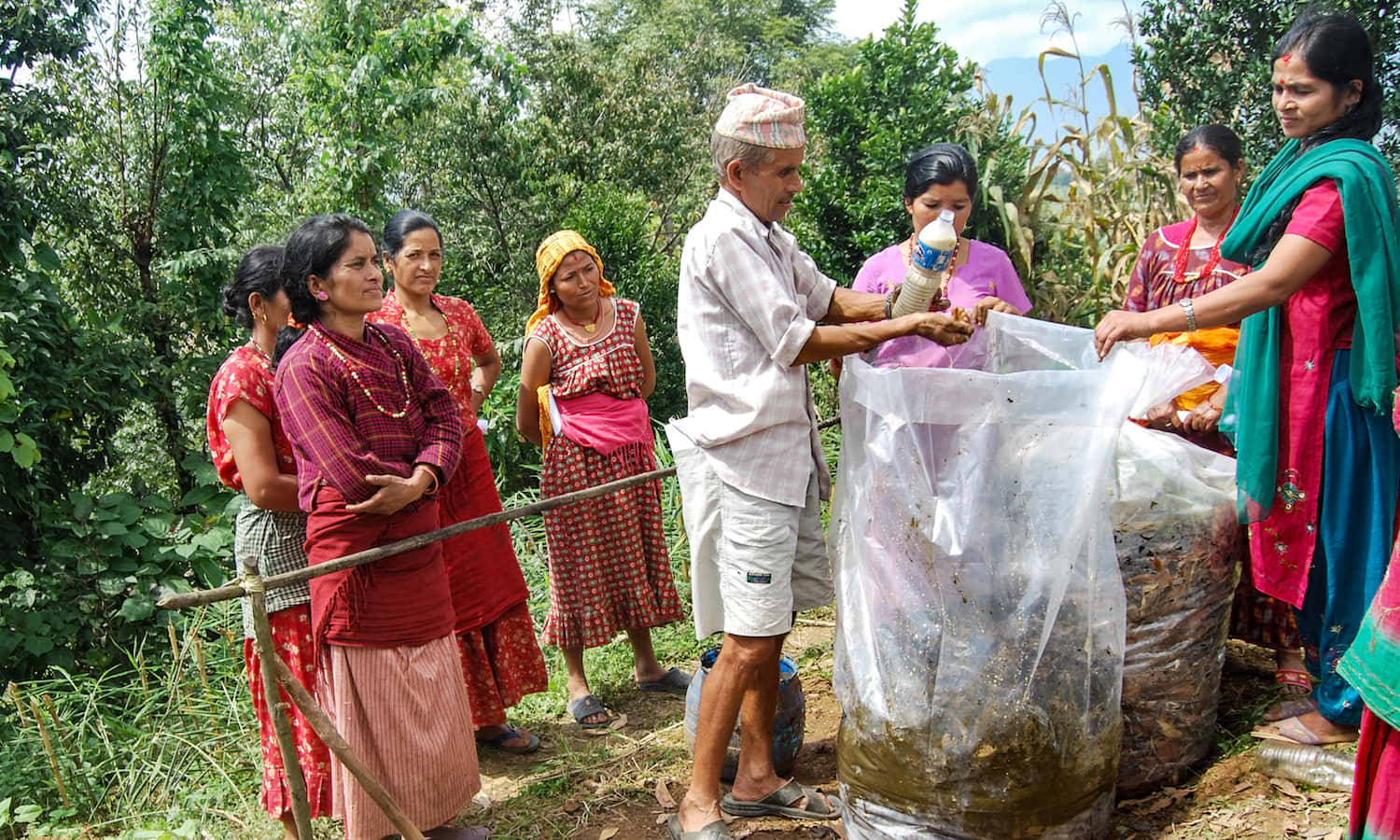Smallholder farms, many of which are located in the developing world, make up nearly half of all agricultural land on the planet. In those same farms, however, chemical-free solutions and advances in sustainability remain short-lived, despite the developing world’s extra susceptibility to the potentially harmful effects of pesticides. A recent collaborative study out of Virginia Tech provides insight on some of the factors that impede the adoption of sustainable agriculture in developing countries and the efforts needed to ensure innovative solutions reach more corners of the world.
The study, jointly led by the university’s Feed the Future Innovation Lab for Integrated Pest Management (IPM IL) and Office of Economic Development, focused on two natural solutions—Trichoderma and cocopeat—that the IPM IL employs to address seed and soil health in three countries—India, Nepal, and Bangladesh.
The sale and transport of seeds in the developing world largely goes unregulated, which not only spreads plant pathogens and pests, but contributes to the one-third of crops lost every year. Trichoderma, a beneficial fungus, builds plants’ defense mechanisms to protect against pests and disease, and can be applied at any stage of a plant’s life and on any part of a plant or its soil. Cocopeat, the dust of a coconut, is a sterile growing medium that supports stable plant roots, its cellulosic structure fostering the uptake of nutrients. The study showed that the application of both heeds positive results including high germination rates, increased crop yields, reduced pesticide use, and increased farmer income. Their adoption also helped lead to a boom in the plant nursery industry in Asia that opened new job opportunities specifically for underemployed women. Women, in fact, are at the forefront of Trichoderma production in general, making up the majority of scientists developing and studying the fungus.
Despite plants and people benefitting, access and perception keep adoption levels of both sustainable solutions low compared to chemical use. Farmers involved in the study said it can be disarming to apply a crop solution like Trichoderma or cocopeat preemptively before a problem arises, versus spraying a chemical that appears to be immediate and all-inclusive in its results throughout the growing process. Smallholder farms are typically single-family operations that depend entirely on a season’s harvest for food and income. For a family working on less than an acre of land, choosing new, emerging solutions over seemingly dependable, long-used pesticides would require ongoing demonstrative evidence of benefits.
“They [farmers] want a quick result,” said one Trichoderma manufacturer, “because their profitability will matter in 60 days or 30 days.”
According to the study, 71 percent of farmers in Nepal who use cocopeat live in villages with community business facilitators (CBFs), who are entrepreneurial farmers a part of a program specific to Nepal given a commission for promoting agricultural products to community members, integrated pest management (IPM) products included. Nepal’s high adoption levels compared to India and Bangladesh indicates the importance of marketing and community trust in increasing the use of unconventional products. The study also revealed adoption of Trichoderma in India was higher in areas close to local extension centers where farmers can receive training on how to implement agricultural practices.
The adoption of cocopeat is moderately consistent in India as coconut is widely available, so much so the husk often sits on the roadside as a waste material. The study, however, showed that weather in Bangladesh is a major limiting factor for accessing cocopeat. Bangladesh’s wet climate makes it difficult to properly dry the coconut husk, and there is hardly enough open space to dry it anyway due to the country’s overcrowded land.
The study showed that many actors affect the uptake of sustainable materials, not simply smallholders. In India, for example, government subsidies for equipment and facilities increased the number of Trichoderma manufacturers, hence encouraging innovation. The government support of residue-free vegetables in Nepal, too, is a boon to sustainable industries and plays a role in high adoption rates. In all three countries, farmers and manufacturers remarked it would be easier to promote and implement natural solutions over synthetic chemicals if there were simply fewer barriers to registration.
“Context is key,” said Muni Muniappan, Director of the IPM IL. “We cannot expect smallholders or agricultural entrepreneurs to risk their livelihoods on sustainable materials that are not easily accessible. Factors such as convenience and culture must always be taken into account.”
The IPM IL, which has been funded by the U.S. Agency for International Development (USAID) for 25 years, will use the study’s findings to tailor future food security initiatives, not only to the individual farmer, but to emerging businesses and governments in the developing world as well.
Photo courtesy of Sara Hendery.















